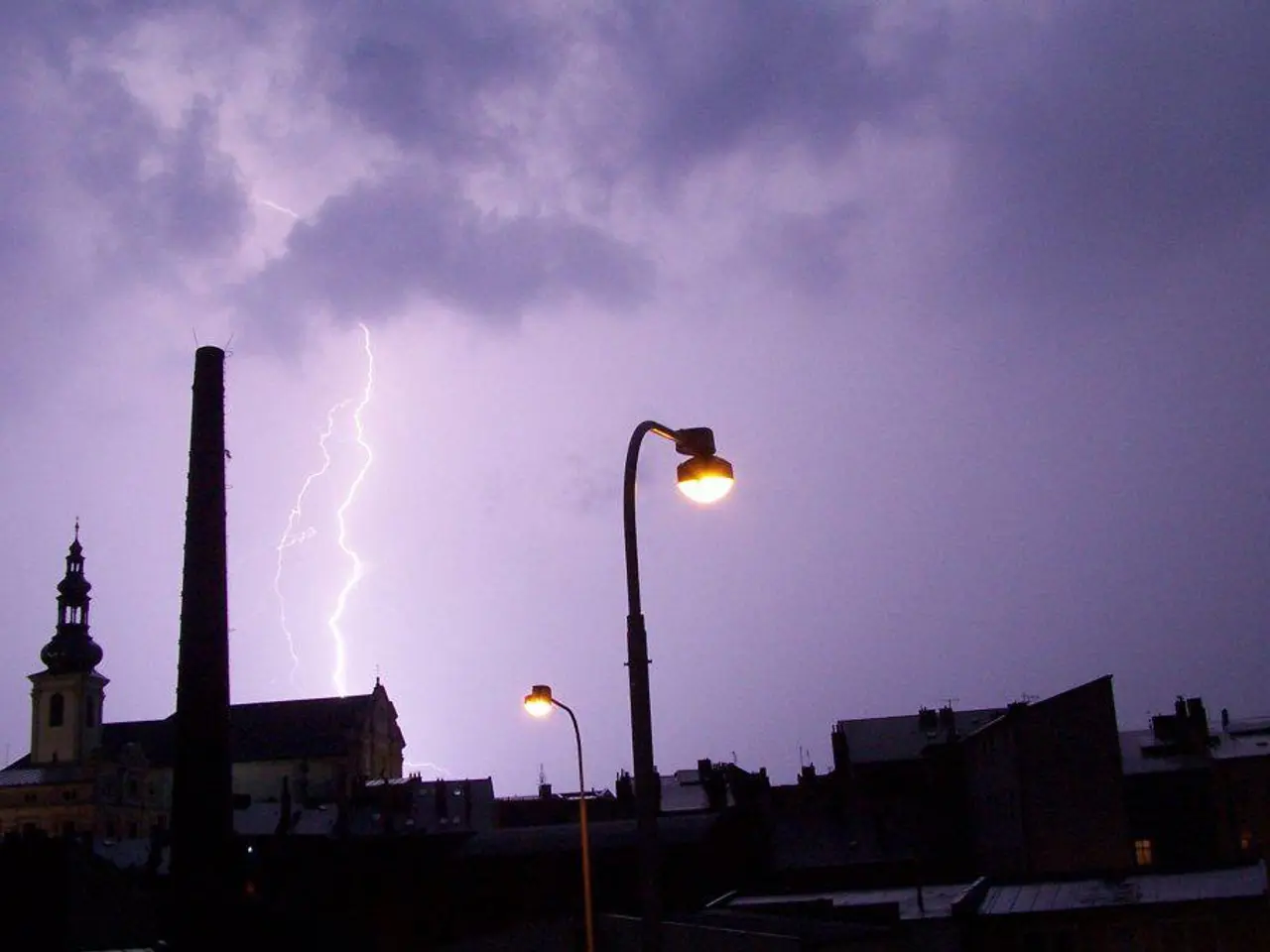Wildfires engulfing Canada and the western states have prompted air quality warnings across a total of 10 regions.
Smoke from Canadian Wildfires Affects Air Quality Across the Eastern U.S.
Smoke from wildfires burning in Canada is forecast to affect air quality across a significant portion of the eastern United States through Wednesday. The smoke, which is expected to be medium to heavy, is set to extend from Duluth, Minnesota, to Buffalo, New York, and through New York's Hudson Valley [1][2].
Air quality alerts are currently in effect in ten U.S. states due to the smoke, which has created hazardous air conditions. The wildfires have burned over 16 million acres, more than double the 10-year average for this time of year, and many remain out of control [1][2]. This smoke carries fine particulate pollution (PM2.5), which can be harmful to health.
The smoke contains black carbon particles that contribute to poor air quality and can aggravate respiratory and cardiovascular conditions. The wildfire smoke from provinces such as Alberta, Saskatchewan, and Ontario has spread across the northern U.S. states, triggering air quality warnings for areas stretching from Duluth, Minnesota, to Buffalo, New York, and beyond [1][2].
Meteorological conditions, such as wind direction and humidity, influence the smoke’s movement and intensity in different regions. For example, Boston was expected to see some relief from smoke on Tuesday due to onshore winds, while Detroit and New York City might experience breaks as well due to easterly winds [2].
Elsewhere in the U.S., wildfires in the West continue to create smoky skies for millions, from Southern California to Colorado. One of the biggest active wildfires is burning in Southern California's Santa Barbara and San Luis Obispo counties. As of Tuesday morning, the Gifford Fire had burned more than 82,500 acres across these counties and was just 7% contained [3].
In other developments, the Harry Reid International Airport in Las Vegas experienced a brief slowdown in air traffic on Tuesday morning due to smoke, and the FAA announced that it was slowing flights into Denver International Airport due to smoke and low visibility [4]. Additionally, two hikers were rescued by helicopter from a remote beach due to rising tides cutting off their exit route [5].
Air quality in Michigan, including the city of Detroit, remained unhealthy for sensitive groups on Tuesday, and red flag fire danger warnings remain in place for parts of Nevada, Utah, Colorado, and Wyoming due to very dry conditions, low humidity, and gusty winds [1][2].
References: [1] Smoke from Canadian wildfires to affect air quality across eastern U.S. [2] Wildfire smoke from Canada closes in on US East Coast [3] Gifford Fire in Santa Barbara and San Luis Obispo counties continues to burn [4] Smoke from Canadian wildfires disrupts air traffic in Las Vegas and Denver [5] Two hikers rescued from remote beach in Washington state
- The environmental impact of these wildfires has transcended borders, as smoke from Canadian wildfires influences the air quality across international regions, such as the eastern United States.
- The adverse effect of wildfire smoke on the environment extends beyond simply air quality; it also poses a risk to human health, especially for sensitive groups, such as those in Michigan.
- Climate change and shifts in weather patterns have contributed to the escalating number and intensity of wildfires, as over 16 million acres have burned in Canada this year, more than double the 10-year average.
- The scientific community is closely monitoring the impact of wildfire smoke on various aspects of environmental science, including its contribution to climate-change-related issues, such as altering the climate-change trajectory by adding more particulate pollution to the atmosphere.








